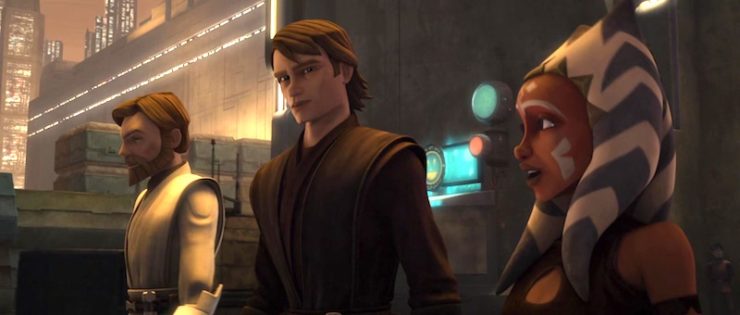In Star Wars, Episodes I-IX are wrapped around the Skywalker family like a fluffy, strangling blanket of expectations and betrayal. This journey begins with one person in particular: Anakin Skywalker, the supposed Chosen One of the Jedi, later best known as the Emperor’s right hand, Darth Vader. The problem with this very dramatic arc is that the first three films—meant to show us exactly why Anakin becomes one of the galaxy’s most infamous tyrants—doesn’t actually give us much by way of explanation on his actions. We’re told things rather than shown them. We don’t know how he gets from Point A to Point K(ill-All-the-Younglings). And that’s kind of important, given that his actions set the entire saga in motion.
Don’t worry. Television’s got you covered.
The rise and fall of Anakin Skywalker—and then Darth Vader—is carefully laid out in two series, The Clone Wars and Rebels. Now, I’m a completest, so when people ask me what episodes they need to watch in order to get Anakin’s story, I usually say “ALL OF THEM, HOW DARE YOU”, but I know that doesn’t work for everyone. So here’s a culling that will give you the bigger picture. And you know… maybe you’ll enjoy it enough to go back and watch everything. I live in hope.
The Clone Wars
Star Wars: The Clone Wars Movie

The opening to the Clone Wars television series is a movie that sets up the basic outline for the show, at least as it pertains to the Jedi, and specifically to Anakin Skywalker. This introduction contains perhaps the most important addition to the Star Wars saga as a whole: Skywalker’s Padawan, a Togruta teen named Ahsoka.
Many fans boycotted The Clone Wars series over the addition of this character. (I’ll cop to being one of those when the show started.) The idea that there was any room for a character who basically hung around Anakin for the entirety of the Clone Wars, yet was somehow never mentioned in Revenge of the Sith, seemed like a bad storytelling move. The idea of Anakin being master to any Jedi learners also seemed circumspect, given what we’d seen of him onscreen. But when all is said and done, Ahsoka’s presence does just the opposite—she makes sense of Anakin and enriches his story tenfold. What’s more, her own journey is one of the best the Star Wars universe has ever told (and no, I’m not being cute here). The point is, in order to understand Anakin Skywalker, you have to know Ahsoka Tano.
Clone Wars is their introduction to one another, and presents the conceit of their relationship: Yoda believes that Ahsoka will help Anakin better manage his deep attachments to people. If he can train her, and watch her become a Jedi Knight and find success after moving on from him, Yoda reckons that Anakin will learn that he doesn’t need to hold onto others so tightly. He will no longer be ruled by fear over the possibility of loss.
Needless to say, this lesson will not go at all how Yoda plans.
“Storm Over Ryloth” (The Clone Wars: Season 1, Episode 19)
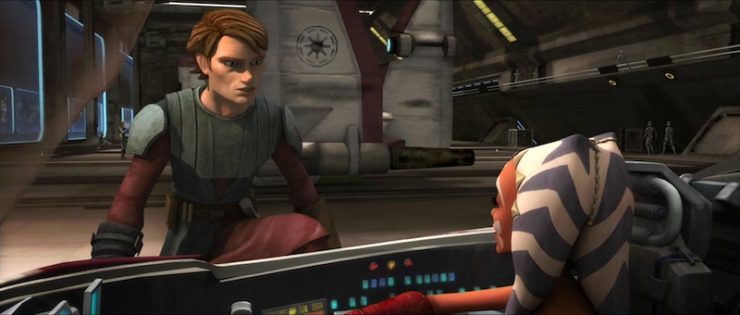
Ahsoka makes a major error in her first command assignment, leading her to doubt her capabilities in battle. Here, we get a glimpse of how Anakin and Ahsoka are well-suited as a mentor and student, and how they make each other better both as Jedi and as people. It also really drives home how young Ahsoka is at the start of the show, and how much Jedi trainees are being asked to do as a result of the Clone War. This applies to Anakin as well, being roughly nineteen when the war began.
“Children of the Force” (The Clone Wars: Season 2, Episode 3)
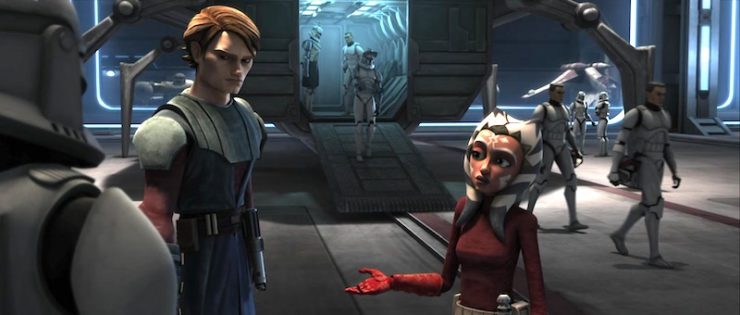
An important episode for what’s to come in Star Wars: Rebels, setting up the idea of the Sith rooting out Force-sensitive children. We also see how Anakin behaves when his anger gets the better of him, and watch the Jedi take advantage of his closeness to Chancellor Palpatine, not realizing that this is playing right into the the future Emperor’s hands.
“Senate Spy” (The Clone Wars: Season 2, Episode 4)
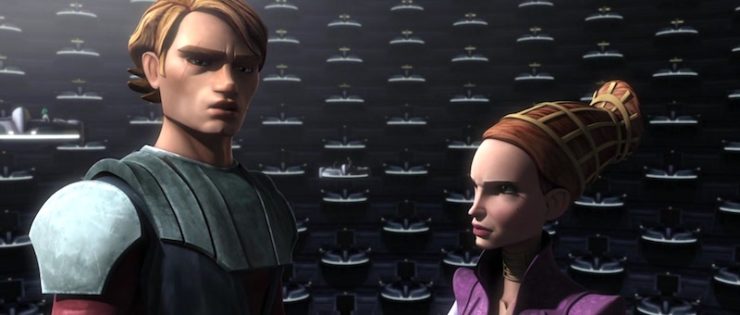
Ever wanted to see how Anakin and Padmé actually handle the romantic aspects of their relationship, and what a mess it can be? This episode lets all of Anakin’s jealousy and inexperience come to the fore, and makes it clear that Padmé has terrible taste in men via an extremely seedy ex-boyfriend. (It also gets harder and harder to believe that at least some of the Jedi don’t know that Anakin and Padmé’s relationship goes well beyond friendly acquaintances.)
“Cat and Mouse” (The Clone Wars: Season 2, Episode 16)
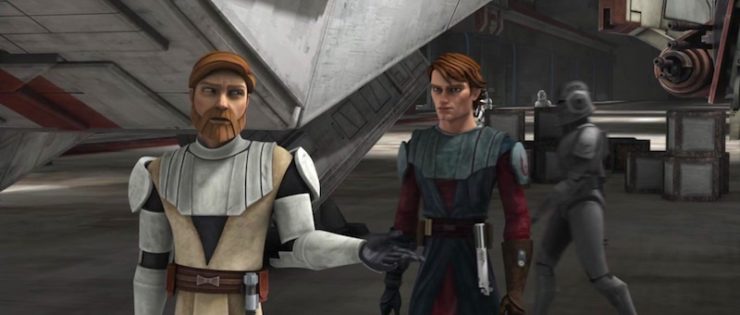
This episode is actually a prequel to the animated Clone Wars film, set before Anakin meets Ahsoka. It gives a better sense of how Anakin manages to get away with side-stepping orders from the Jedi all the time, and also how Obi-Wan casually enables that behavior. And it shows what Anakin brings to the Jedi in terms of out-of-the-box thinking.
“Assassin” (The Clone Wars: Season 3, Episode 7)
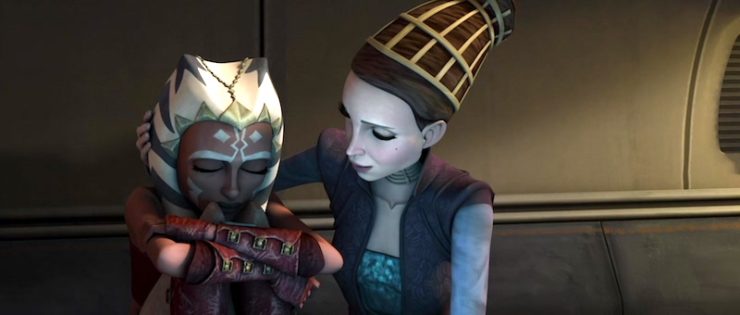
This episode sees Ahsoka having visions of Padmé’s death, similar to the ones Anakin will later face. Shown from Ahsoka’s perspective, it’s easier to understand how these sorts of visions might make it difficult for a person to tell premonition from reality, adding context to Anakin’s later struggles.
“Overlords”, “Altar of Mortis”, “Ghosts of Mortis” (The Clone Wars: Season 3, Episodes 15-17)
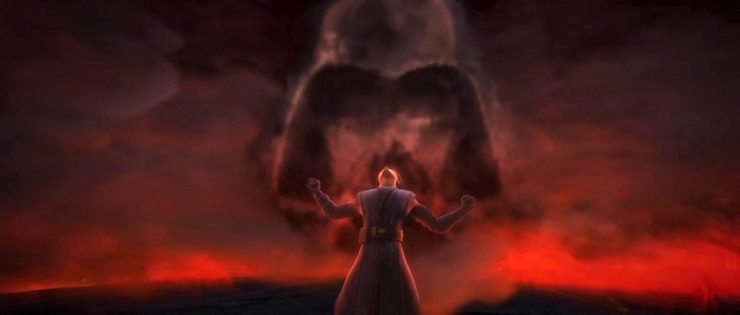
This trilogy of episodes contain plot elements conceived by George Lucas himself, and are all about Anakin’s path and place in the Force. On a world called Mortis, Anakin, Ahsoka, and Obi-Wan come into contact with ancient entities who call themselves Father, Daughter, and Son, with the father acting as a balancing point between his children who embody the light and dark sides of the Force, respectively. The Father wants Anakin to take his place and keep his children in check, insisting that his Chosen One status is real—but nothing goes quite to plan.
Among many keys to Anakin’s story, these episodes address one essential issue: Anakin doesn’t seem to believe he is the Chosen One. Knowing this and how he feels about others heaping that responsibility onto him is important as the story moves forward. And these episodes also imbue Ahsoka with a surprising wellspring of power that informs her future…
“Kidnapped” (The Clone Wars: Season 4, Episode 11)
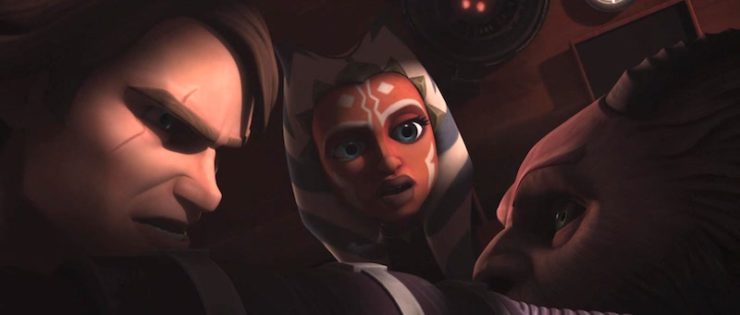
The first in a trilogy of episodes adapted from a Legends canon comic run, this episode digs a little into Anakin’s trauma at having been a slave for the first half of his life, and hints as to just how ineffective the Jedi have been in helping him heal from the terrors of his childhood. And it features Obi-Wan pretending to be a damsel to buy Anakin and Ahsoka time to disarm bombs. (The next two episodes continue digging into the emotional themes, but are concerned with Ahsoka, Obi-Wan, and Rex’s arcs as well.)
“Deception” and “Crisis on Naboo” (The Clone Wars: Season 4, Episodes 15 & 18)
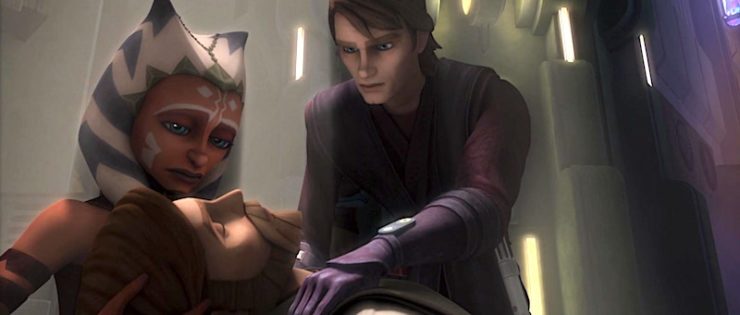
The first and last installments of a group of episodes centered on Obi-Wan faking his own death and infiltrating the criminal underworld, these two parts in particular show how the Jedi and Sith are equally responsible for Anakin’s downfall; the Jedi withhold information from Anakin in order to better “sell” Obi-Wan’s scheme, and Count Dooku and Chancellor Palpatine use Anakin’s grief to their advantage. With so many strings pulling at him, it’s no wonder Anakin has trouble keeping a lid on his emotions.
“Sabotage”, “The Jedi Who Knew Too Much”, “To Catch A Jedi’, and “The Wrong Jedi” (The Clone Wars: Season 5, Episodes 17-20)
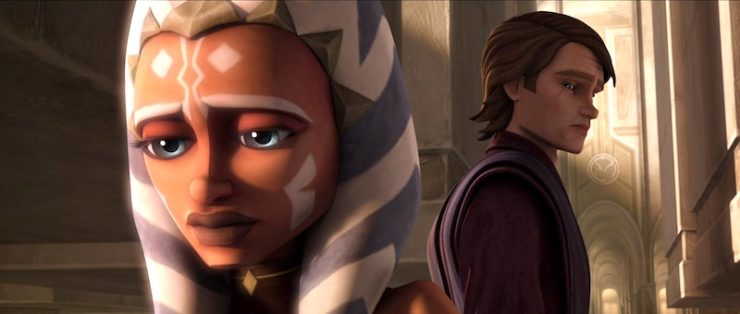
The quartet of episodes that close out season five center on Ahsoka being framed for acts of terrorism against the Jedi, an official inquiry and trial held against her by the Republic itself. In essence, everything that the Jedi are doing wrong, every corrupted aspect of their order, is made abundantly clear here. Anakin is rightfully furious at her treatment, and works with Padmé to clear her name, but in the end, it doesn’t matter. Yoda may have assigned Anakin a Padawan in the hopes that she would help him let go of his attachments, but the way that the Jedi Order treats Ahsoka guarantees the opposite—Anakin ends up feeling more distraught and distant from them than ever. These issues bleed into Episode III with perfect clarity, making sense of Anakin’s anger toward the Jedi and distrust of their decision-making capabilities.
Essentially, if you want to understand why Anakin falls to the dark side, this is the setup. Not his random angsty nightmares, but the mistreatment of a friend, student, and confidante.
“An Old Friend”, “The Rise of Clovis” and “Crisis at the Heart” (The Clone Wars: Season 6, Episodes 5-7)
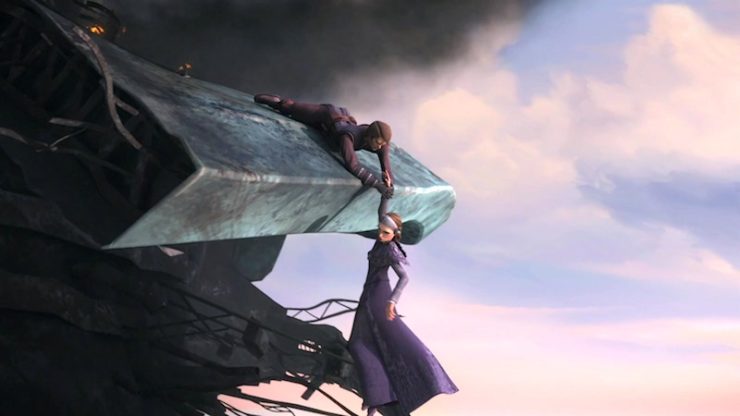
Padmé’s ex from “Senate Spy” is back and more troubling than ever. Anakin’s vindictive side rears his head, but given how crappy Padmé’s former flame genuinely is… no, he’s still pretty petty all the same. We also get a firsthand glimpse of how unstable Anakin and Padmé’s marriage is, and how keeping their relationship a secret is wearing on them. This trio of episodes also gets into the fiscal strain the Clone Wars put on the Republic, and other avenues Palpatine uses to amass more and more power.
“The Lost One” (The Clone Wars: Season 6, Episode 11)
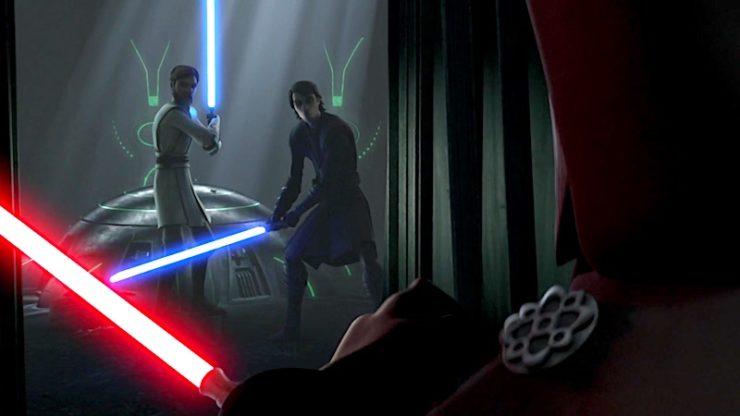
If you’ve ever been bothered by the fact that the plot of Attack of the Clones as it pertains to the creation of the clone army makes no sense, this is the episode for you! Anakin and Obi-Wan and Yoda finally investigate Jedi Master Sifo-Dyas’s death, putting together the mystery of how the clone army came to be. The result is a plot that sees the Jedi entirely complicit in their eventual destruction. These behind-the-scenes machinations make it clear that what we see in Revenge of the Sith is not an explosive or sudden collapse—these events have been building backstage for years.
Rebels
Following Anakin’s exploits in The Clone Wars, his story—and Ahsoka’s—pick back up in Star Wars: Rebels. Set in the years leading up to the Battle of Yavin, the show largely follows the exploits of expert pilot Hera Syndulla and her little found-family band of rebel insurgents that form the beginnings of the Phoenix Squadron: former Jedi Padawan Kanan Jarrus (who survived the Purge and ran for his life), his own Jedi trainee Ezra Bridger, former member of the Lasan Honor Guard Garazeb “Zeb” Orrelios, young Mandalorian Sabine Wren, and a grumpy droid named Chopper. The group eventually crosses paths with Ahsoka, who has been working covertly with the Rebel Alliance as an informant under the code name “Fulcrum”. Vader has no idea that Ahsoka is still around, but more importantly, she has no idea that Anakin survived Order 66 and became Darth Vader.
“The Siege of Lothal, Parts 1 & 2” (Rebels: Season 2, Episodes 1 & 2)
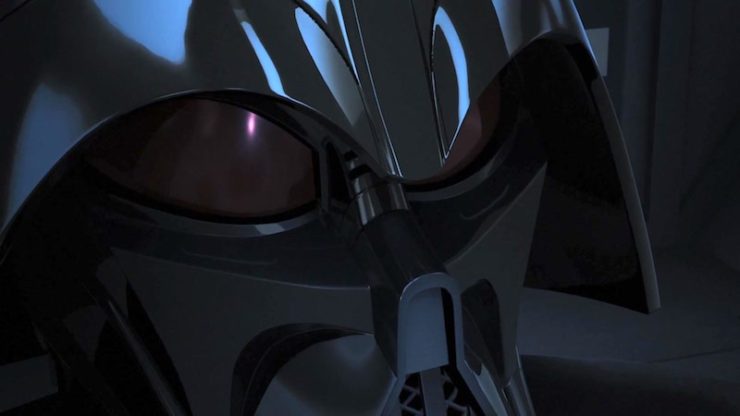
While Darth Vader is working to stop a band of rebels on the planet Lothal, he encounters Ahsoka via a Force connection and realizes that she’s still alive. Reporting this finding to the Emperor, more dark side agents known as Inquisitors are dispatched to stop the Phoenix Squadron and their allies. Ahsoka becomes determined to learn more about the mysterious Darth Vader and what his plans might be.
“The Future of the Force” (Rebels: Season 2, Episode 10)

Though it doesn’t feature Vader, this episode firmly establishes the roles of the Empire’s Inquisitors in their quest to find Force-sensitive babies, and also shows everyone how much Ahsoka has leveled up since the Empire’s rise.
“Shroud of Darkness” (Rebels: Season 2, Episode 18)
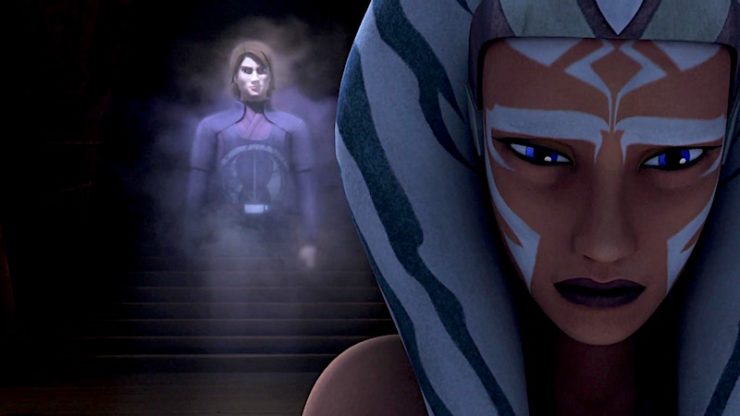
Ahsoka, Kanan Jarrus, and Ezra Bridger head to a Jedi temple to receive guidance about their next actions. While in the temple, Ahsoka comes to terms with her guilt over not being present when the Jedi were executed via Order 66—and she learns the fate of her former master.
“Twilight of the Apprentice, Parts 1 and 2” (Rebels: Season 2, Episods 21 & 22)
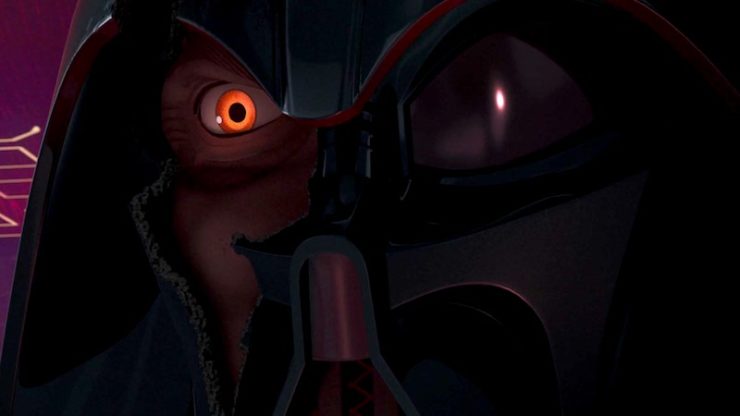
While Ezra, Kanan and Chopper visit the Sith world of Malachor and encounter Darth Maul, Ahsoka finally confronts Darth Vader… but sees him for who he was, not the towering Sith Lord before her. This two-part finale is emotionally devastating, and one of the first events to chip away at Vader’s psyche. You could argue that this is the point where Luke’s redemption of Anakin Skywalker becomes possible—the moment when Ahsoka Tano refuses to leave Anakin Skywalker alone, even if it means her death at his hand.
The end of Star Wars: Rebels reveals the fate of Ahsoka, but Vader’s story doesn’t pick back up until the Original Trilogy, where we first met him. With all those gaps filled in (you could add the Darth Vader comic, if you really wanna get deep into the Dark Lord’s thought process), you can finally get a real picture of Anakin Skywalker as a person. Instead of an awkward teen who blurts out the words “I don’t like sand” to a girl he likes, we find a young man who is so persistently and cruelly manipulated by everyone around him, it’s incredible that he got even a few stable-ish years out of being a Jedi. If you really want to understand the tale of the Skywalker family, starting with how the Jedi Order took an abused slave child, and simultaneously belittled and over-relied upon him to their eventual destruction is really the only place to begin.
Emmet Asher-Perrin can’t even watch the prequels without filling in all the missing info from these shows now. You can bug him on Twitter, and read more of her work here and elsewhere.










